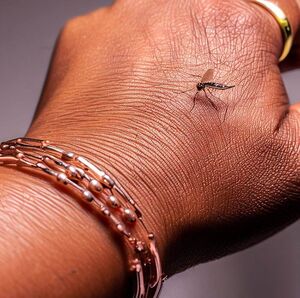Landmark: Learn About Non-Aversion
 | |
| Landmark: Learn About Non-Aversion | |
|---|---|
| Beacons | Adaptation |
| Realms | Enrollment |
| Lenses | Non-Aversion |
| Guides | Stressful Moments |
| Trails | Learn About Adaptation |
The Landmark of Learn About Non-Aversion is where you will practice both experiencing and being patient with aversive sensations. This Landmark is within the Realm of Enrollment, and is part of the Beacon of Adaptation, more specifically the Lens of Non-Aversion.
Landmark Lookouts:
- Feeling the Aversion: Can you observe what it's like to really want something to be over, and how your mental state changes the longer you sit with that?
- Being Patient: Are you able to feel the mental state of being patient while resting with an aversive sensation?
Itchy skin or scalp is something we all experience commonly, and in fact, if you take a moment you can almost always feel some sort of itch on your body.
- While you're engaged in a routine task, like reading on your phone or watching a show, an itch arises on your skin. Hold off on scratching it immediately.
- Observe the itch. Where is it located? How intense would you rate the urge to scratch it?
- Notice how the itch behaves. It may increase in intensity, decrease, or even seem to move around.
- Feel your hand slowly moving up to scratch the itch, but pause just before you do. There's an anticipation building, isn't there?
- Notice that your mental state is changing as the itch is left unscratched.
- Take another moment to observe the itch, now in its full intensity. Recognize that it's just a sensation on your skin.
- Notice what it's like to rest with the sensation and just patiently observe. Notice that Patience in your mind and body.
- At this point you have two paths to take, choose whichever you want.
- The most obvious option is to give in to the urge and scratch that itch. Feel the immediate relief as the sensation subsides.
- The other option is to wait patiently until the itch goes away. It often does, and if it doesn't, you can always scratch it later.
- Reflect on what you just experienced. You noticed an itch, observed it, and controlled when to respond to it.
- Use this skill the next time an itch arises. It's a simple practice of observing and controlling your responses, instead of automatically reacting.
